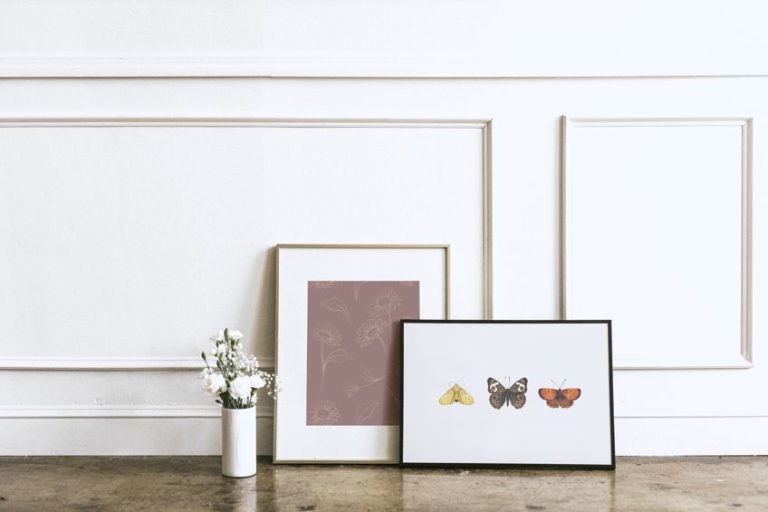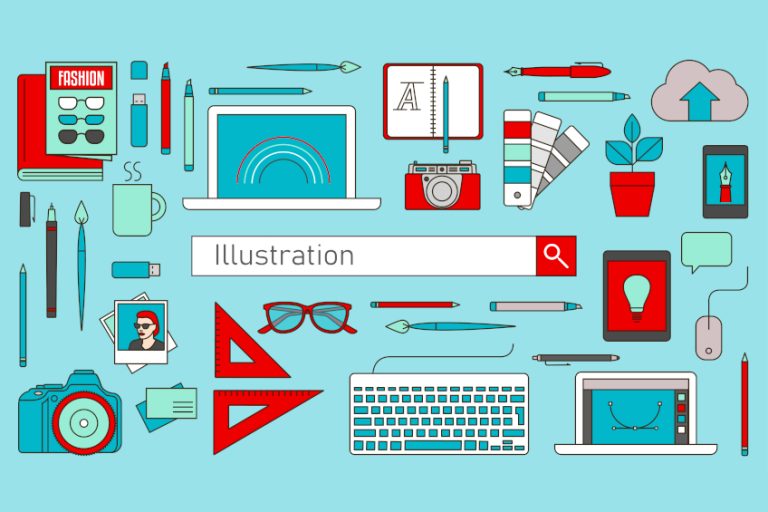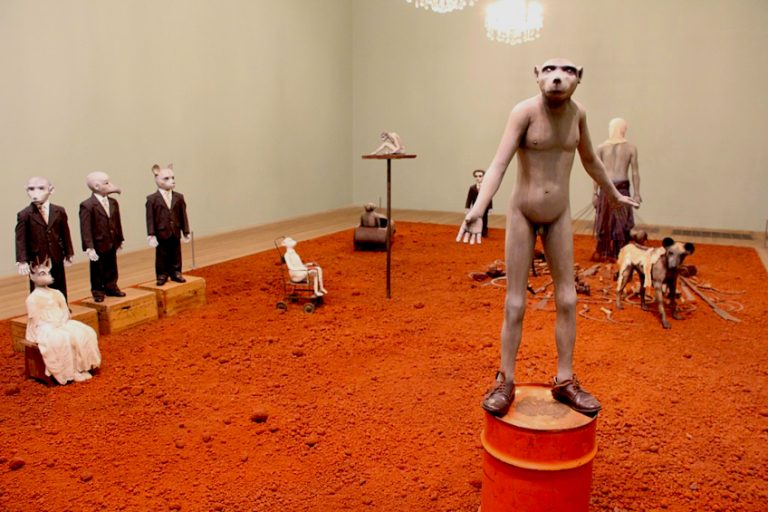How to Be Creative – Our Top Tips to Unleash Your Creativity
This post may contain affiliate links. We may earn a small commission from purchases made through them, at no additional cost to you.
There are many who wish that they were those naturally creative people whose heads readily spin with fresh and exciting ideas. But what most people don’t realize is that creativity is actually a skill that can be developed with time, patience, consistency, and effort. Lots of different activities can tune in on your creative abilities and help you hone them in a way that makes your creativity more accessible. This article is all about how to find your creativity so you can start easily channeling it into your art without feeling burnt out or stifled.
Table of Contents
- 1 How to Find Your Creativity
- 1.1 Gain Creative Knowledge
- 1.2 Listen to Music
- 1.3 Read More
- 1.4 Find Inspiration
- 1.5 Write Stories or Keep a Diary
- 1.6 Keep a Journal for Drawings and Doodles
- 1.7 Make Something With Your Hands
- 1.8 Channel Your Inner Child
- 1.9 Play Games and Have Fun
- 1.10 Take Chances and Try New things
- 1.11 Travel and Explore
- 1.12 Exercise and Stay Active
- 1.13 Sleep Well and Take Breaks
- 1.14 Limit Your Screen Time
- 1.15 Socialize and Network
- 1.16 Share Knowledge and Ideas
- 1.17 Work With Deadlines
- 1.18 Dedicate Time Towards Brainstorming
- 2 Frequently Asked Questions
How to Find Your Creativity
If you are reading this article, you have likely experienced the frustration of trying to think up something new, original, and brilliant only to be met with something that seems cliché, overdone, or just plain boring. Psychologists tend to agree that creativity isn’t an inherent skill given to some people over others, but rather something that can be trained and advanced throughout a person’s life. We talk about how to be creative throughout this article.

So, if you dream of being creative, the methods we list below to aid you in finding and nurturing your creativity. They will help by boosting your knowledge, confidence, and practical skills. A lot of things can cultivate creativity and just as many things can stifle it. Once you can appreciate the value of your unique creativity, you will find that you will only get better. Since everyone is different, some of the methods below may not work for you. Nonetheless, every method is worth trying out at least once!
Gain Creative Knowledge
Learn as much as you can about the creative mediums you like to work with. The more knowledge you gather the more comfortable you can be applying the techniques you learn in the proper ways to get the outcomes you desire. Having an idea of what you want to create and having it turn out differently because you don’t have enough practical knowledge can curb the creative flow. While it is important to find your style, you must remember to not underestimate gaining the crucial foundational knowledge for and familiarity with your medium.

You can increase your pool of knowledge by reading articles, watching tutorials, reading instructional books, or attending classes. If you find that you prefer working on your own and at your own pace then videos, articles, and books will be the best option for you. However, if you like direct contact and interaction with your instructor, you might be better off taking a class for your specific medium. Taking a class will surround you with like-minded people who may have similar interests to you. Socializing with other creative people affects your creativity too, and you might identify some strengths and weaknesses in your work that you can improve upon.
Regardless of how you choose to increase your artistic knowledge, the result will be that you are exposed to new ways of approaching your work and thinking creatively. You can then start to apply this knowledge throughout your journey as a creator.
Listen to Music
Lots of people find that the best way for them to feel creative and inspired is to listen to some music. Music has been found to help people focus better and start thinking more creatively overall. You could dedicate time in the day to listen to more music while you relax, or while you perform other tasks, such as working, cleaning, or cooking. Any genre you like is suitable for doing basic tasks such as those above, but if you are doing something like writing or reading you may need to step outside of your comfort zone.

Classical music has been found to be the most effective genre to aid and bolster creativity and focus when trying to be more creative. Most people report an increase in productivity when listening to classical music while they work, but not every genre appeals to everyone.
Music that helps you be productive doesn’t have to be all Mozart and Beethoven. For example, you might love genres like rock or pop instead of classical music but find that you can’t focus properly when there are lyrics. You could try to find instrumental, orchestral, or acoustic covers of the songs that you love and listen to them instead! You could also look into electronic or ambient music, meditation music, video game soundtracks, or movie scores if you want to make playlists to keep you focused and inspired.
Read More
If you are wondering how to be creative, try regularly reading more books to aid your creative thinking. Books are a great way to train your imagination because you can readily practice visualizing the people, places, or events that you read about. Try to pick books from different genres or authors, and don’t be afraid to try novels that you would normally avoid. Reading other people’s creative work can help you become more creative since you will be able to draw from more and more sources for inspiration and information.
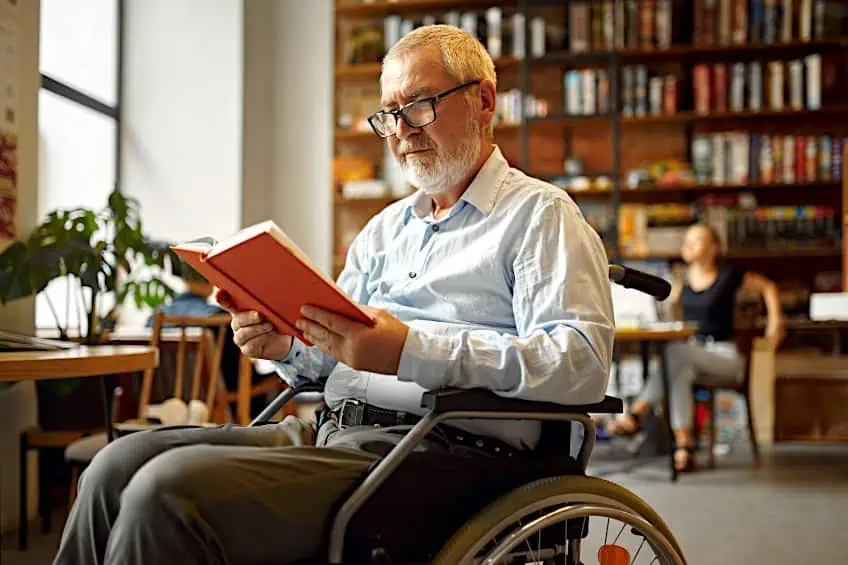
You can find books at charity stores, libraries, and bookstores or you can order them online. You could also opt to get some kind of reading tablet and buy eBooks online. If you are unsure of what books to read or what you might like, you could try joining a book club. A book club will also give you the chance to discuss the books you read. It will provide a place where you can break down the themes and characters amongst other people who could introduce you to more ideas and perspectives.
Find Inspiration
Break away from your routine and start experiencing new things and places. To broaden your horizons try visiting art galleries, exhibitions, craft markets, or museums. These are all great places to enjoy the works made by other people and to find plenty of inspiration. Take photographs of interesting things that you see and keep any leaflets, pamphlets, tickets, or other mementos from these trips for a scrapbook. Scrapbooking itself is a creative activity that will help to improve your eye for composition. Keeping mementos will help you to more clearly remember the experiences and draw on them for inspiration at a later date.
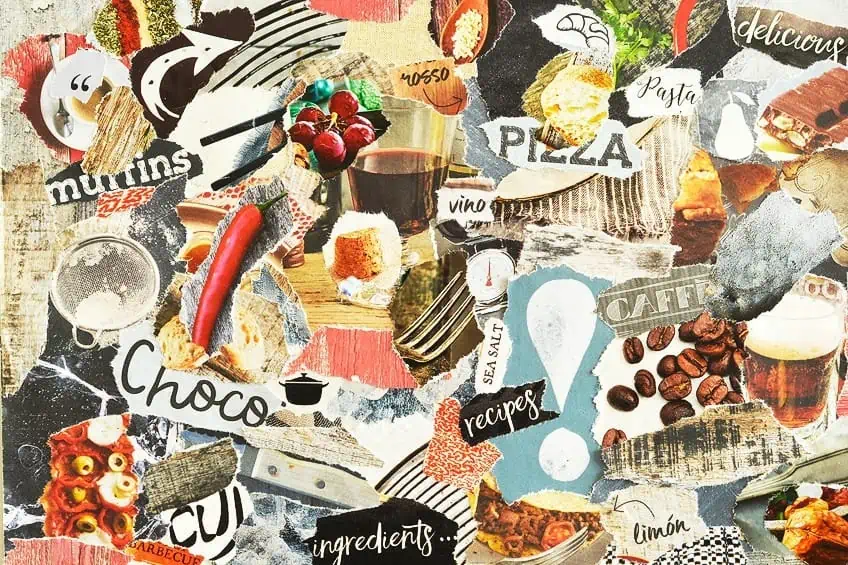
Write Stories or Keep a Diary
One of the best ways to be creative is to start writing stories or keeping a diary. You can bolster your creativity by writing short stories of 100 words or less. Writing short stories puts you in a position where you have to tell a complete story with a structured beginning and end, which teaches you how to approach creativity in a more planned way. You can find writing prompts and communities online for inspiration and feedback.

Another idea that uses writing to help you increase your creativity is to start and end your days with something called a free-write. This is where you write out your thoughts, feelings, or plans in a stream-of-consciousness style. Freewriting helps us clear our minds of stress and allows us to rediscover and process our perspective on things. A clear mind is great for creativity and being able to refer back to your thoughts can fuel inspiration! Keeping your writing in a journal is a great way to compile your thoughts while also keeping them private. If you struggle writing out how you feel or what is on your mind, you can find prompts for journaling online. Some examples of good prompts to get started with are:
- I’ve been struggling to…
- If I had more free time I would…
- I feel uncomfortable when…
- I’m thankful for…
Keep a Journal for Drawings and Doodles
Try sketching or doodling when you start to feel bored while working or when you have some free time. Doodling can help increase both productivity and creativity. If you are in a class, meeting, or lecture and feel yourself drifting off, try grabbing a pen or pencil and absent-mindedly drawing something. You might be surprised how this action can pull your mind and focus back to the real world. Keeping a sketchbook dedicated to sketches and doodles is a great way to refer back to ideas and concepts at a later time.

Make Something With Your Hands
Using your hands to create something helps you gain information from all your senses which can encourage more creative thinking in the long run. Many activities that require the use of your hands are also very relaxing and can help you get rid of the stress that might be causing your creative block. Try taking up a hobby like knitting, sewing, crocheting, cooking, gardening, or woodwork. All of these activities are good for your mind and will give you a tangible outcome if you follow through with them! You could even try redecorating or rearranging some rooms in your house, which has the added benefit of giving you a fresh living space that can aid more creative thinking.

If you really want to use the power of making to boost your creativity, then don’t set out to make something that is potentially useful at all. A famous art school once set up a project called “permission to fail” where students were challenged to create an artwork that they were sure would be a visual, conceptual, and aesthetic disaster. This unexpected freedom from the need to make something of clearly determinable value in favor of making something potentially useless, invariably results in a radical change in the quality of a person’s creative thinking.
Channel Your Inner Child
Children are naturally creative because they have few inhibitions when they approach creating things. They are willing to try new things and make mistakes. Children are also much less burdened by daily life and can more readily tap into their creativity.

If you are wondering how to get creative, it means learning to tap into your inner child. Many artists learn to channel this child-like mentality when looking for inspiration. This means looking for adventure and leaving behind insecurities to take risks and make the most of every moment. It also means gaining back childhood optimism and naivety to see the world in a different light. It can take a lot of work for some people to put aside their responsibilities and find their inner child again. Speaking with a therapist, meditating, dancing, singing along to music, or reading fiction books are all great ways to try to channel your inner child more.

Play Games and Have Fun
Another one of the best ways to be creative is to try to have more fun and play games in your free time. Playing games can activate the more creative areas of your brain that might be stifled by everyday adult life. You could try building Lego models from your favorite movies or learning to play Dungeons and Dragons with a group of friends. Both of these activities can directly bolster your creative thinking. Relaxing and having fun is not only extremely beneficial to your mental health, it also allows your creativity to flow more smoothly. There are plenty of games that you can discover and try out to help you think more creatively, but below are some of our favorite suggestions.
The 30 Circle Test
The 30 Circle Test is a great way to push yourself into thinking creatively while working as quickly as possible. Use a compass to draw 30 equally sized circles on a piece of paper and then set a stopwatch. Your goal is to use as many circles as possible to create drawings while timing yourself until completion. Do the test every week or day and keep trying to break your record. This game helps you embrace ideas as they come instead of overthinking or rejecting them. If you don’t want to keep drawing 30 circles over and over again you can find free printables online.
Word Games
There are many word games you can play to help you think of new ideas and to think more creatively. Below are three of our favorite word games that you can try out. You can also find lots of other fun and popular word games to try out by looking online.
- A type of word game you can play quite easily is something called a word association game. Word association games work by writing down a word and then writing down words that connect to it. You can then write words that connect to those words and so on. For example, if you start with the word bird you can then write down the words seeds, fly, eggs, wings, and feathers. Then you can take the word fly and write the words airplane, helicopter, bats, and superhero.
- Another way to play with words is to choose a long word and see what words you can create using its letters. For example, if we take the word computer, we can get the words compute, crumpet, recoup, tempo, trope, tumor, cure, and quite a few more!
- Word Melt is a word game that works by taking a word and changing it into another word one letter at a time. For example, if you take the word dull, you can change it to mull. Then you can change the word mull to mule, and then to mute, and so on.
Exquisite Cadaver
You can play a drawing game called Exquisite Cadaver with your friends. Exquisite Cadaver was a popular technique used by famous surrealist artists to make use of untapped reservoirs of creativity. The idea of the game is that each person contributes to a composition in sequence after being allowed to see only part of the previous person’s drawing. The composition is made up of a head, a torso, legs, and feet. You can draw with or without restrictions. For example, you can make a rule that only humanoid features be drawn, or you can scrap the rules and someone could even draw a boat or building to make up the torso! If you are a little confused, try looking online at Exquisite Cadaver examples for inspiration before you get started.
- You and a friend can both have a piece of paper and a pencil. Both of you can fold your papers into quarters to create the segments either person will draw on.
- Each of you can now start drawing the head of the composition, making sure that the lines overlap the fold so that the next person can continue easily. Try to add to the background of the space you are working with as it will provide more visual interest in the final piece.
- Once both of you have completed the head you can swap your pieces of paper with one another. The paper should be folded in a way that the head is not visible because the next segment is exposed. We suggest working within a time limit so that neither person is kept waiting. There will also be a better chance of drawing whatever comes to mind without too much stress or worry.
- Steps two and three will be repeated to complete the torso, legs, and feet. Whoever made the head of one drawing will also make the legs, while whoever made the torso will make the feet.
- Once the feet have been completed on both drawings, the paper can be unfolded to show the completed compositions.
Take Chances and Try New things
One of the first pieces of advice we gave in this article was to gain technical knowledge about your mediums. The piece of advice we give you at this point in the article stands in contrast to that advice; put aside what you have learned in the past and try new things. You may have created great works in the past that you are very proud of, but it is important for your creativity that you continue to grow, change, and innovate. Using the same ideas, techniques or even mediums over and over again can trap you in a loop that stifles your creativity.

Versatility is an important characteristic that accomplished artists have developed over time, as they make a point to always take on new opportunities and try out fresh ideas. There are many quotes from artists stating that conformity is the enemy of creativity and that while it is important to know the rules of art, it is equally important to know when to break them. Lots of world-renowned artists attest to the idea that if you follow all the rules, you will stop being truly creative and lose your individuality and ingenuity as an artist.
Travel and Explore
People who don’t know how to be creative might need to try to travel more, even if it is just to another state. Travelling allows you to see new parts of the world and immerse yourself in different local cultures. New experiences increase cognitive flexibility and allow you to draw on inspiration from fresh places. Being able to draw connections and parallels between all the places you visit will help you be more creative over time.

When traveling, it is also important to immerse yourself in the local culture. Different areas have different art, cuisine, history, and people for you to get familiar with. Travelling keeps all your senses stimulated and gives your brain more to work with when you try to think creatively. When you travel, you are exposed to a plethora of new sights, sounds, tastes, and smells that you can then draw upon for inspiration.
Exercise and Stay Active
Another thing to consider changing in your lifestyle is the amount of exercise you are getting. Between working and trying to keep up with hobbies it can be hard to find the time to exercise but finding 30 minutes each day to do some cardio can help your body and your mind! Research has shown that exercise is linked to better brain function, lower cortisol levels, and more creative thinking. If you can find 30 minutes to spare every day to take a run, do some yoga, or even just fit in a set of squats, jumping jacks, and sit-ups you will quickly start seeing the difference.

You can also make a point to get more steps in throughout your day, even if it means walking around the office more. Sedentary lifestyles are bad for the mind and body so downloading a phone app that monitors your daily steps and allows you to reach targets can really improve your creativity, productivity, and overall life satisfaction. You try walking down your street or through a park which will have the added benefit of letting you gather inspiration from the world around you.
Sleep Well and Take Breaks
When talking about mental and physical health in general, one of the most crucial things people overlook is the importance of a decent, uninterrupted night’s rest. Sleep allows your brain time to rest and recompile after a long day. The brain stays active during sleep and if you are struggling with a problem or creative block, you might find that it is easier to tackle when you wake up the next morning. This means you should aim for a consistent sleep schedule with at least a full 8 to 9 hours every night.

Your brain rests at night but it also needs to rest throughout the day. It is important to schedule break times for yourself throughout the day, even if things seem so urgent that there is no time. Trying to push through a task with no breaks can lead to exhaustion and burnout, where you will be forced to rest for even longer than if you allowed yourself small breaks!
Try to work for short periods broken up with shorter but more frequent breaks. For example, work for half an hour and then take a five-minute break where you can stretch, walk around, and get a glass of water. This sort of work cycle sparks creative thinking since it makes us feel more motivated, focused, and fulfilled rather than tired and stressed out.
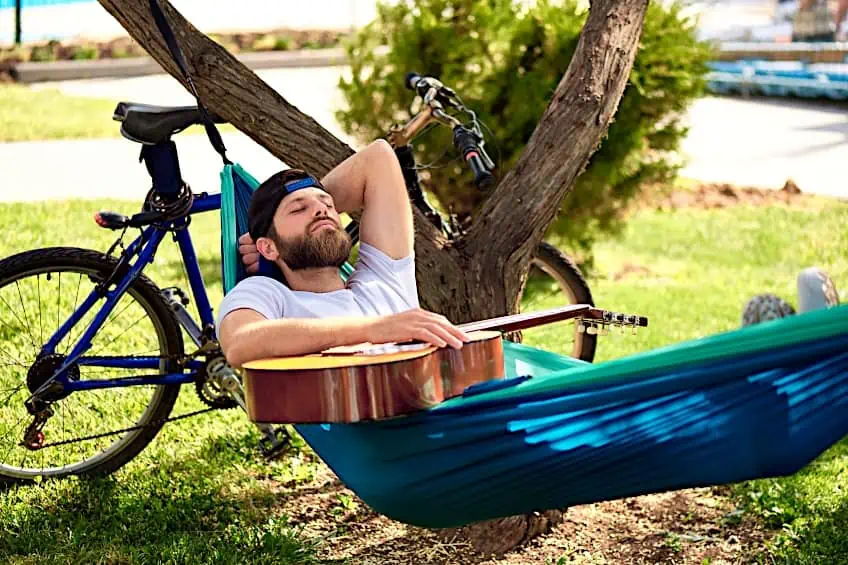
Limit Your Screen Time
Keep your phone or laptop far from you while working or trying to be creative. While your technology can be a gateway to many ideas and lots of inspiration, it is also most people’s main source of distraction. Schedule time to spend on your devices and try to keep it to a minimum. Rather spend that time practicing skills, reading books, or doing some of the things we have mentioned above. There is no reason to cut out your technology completely however, the internet is a great place to do research, make connections or find inspiration. Just don’t get so caught up in it all that you don’t turn any of your ideas into reality!

Socialize and Network
You might find that you do all of the things we have listed so far and still don’t know how to get creative. Perhaps you are not spending enough time with other people! Working in isolation and trying to find inspiration on your own can quickly become dull, tedious, and quite difficult. Even if you are someone who is more introverted, it is important to socialize to some degree.
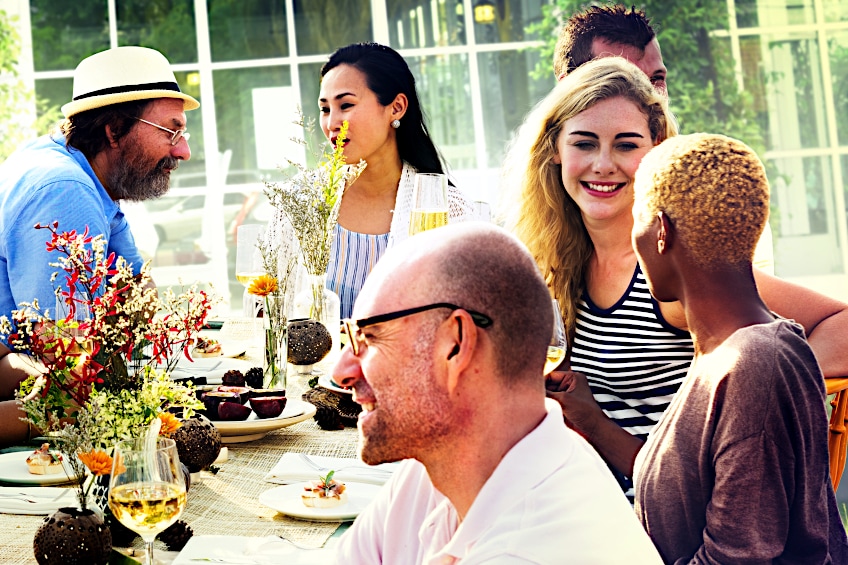
Try to attend events and try activities outside of your current routine to meet new people and start conversations. You could visit an art gallery or museum if you are hoping to find artistic people to converse with. Approach them and talk to them about the art in the area. Try asking them whether they enjoy looking at art or if they make some kind of art of their own.
You can also meet new people by attending art classes and socializing with the other participants. People in art classes with you can give you feedback and perspective on the pieces you are working on. They can help teach you new styles or techniques and encourage you to take new risks with your art. You will also find that being surrounded by and connected to other creative people will keep you motivated as they can act as supporters and friendly competition.
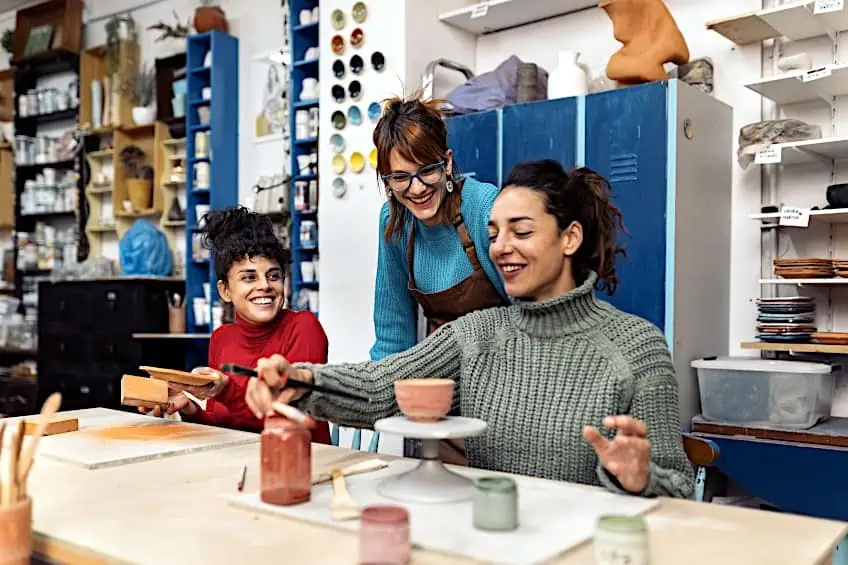
Having a healthy balance of people who think the same way as you and people who think differently and may critique your work is important. Getting to know people who are different from you can really aid your creativity by helping you indulge in fresh ideas and new perspectives. Differing opinions might be hard to digest but they can hold truths that help you improve as an artist if taken into consideration. Try to create a large network of creative minds from many backgrounds to help you tap into inspiration and creative thinking and be sure to connect with them regularly to brainstorm and discuss projects, concepts, and ideas.
Once you have a fair amount of knowledge you can also benefit from sharing it with other people. You could teach your friends how to use your preferred mediums and explain your techniques and methods. You could also try writing tutorials for a blog or making instructional videos where you share your knowledge.

Teaching others is a great way to cement your knowledge and gain a deeper understanding of everything that you know about your medium. People you teach can help inspire you with the questions they ask, the knowledge they share in exchange, or the art that they go on to make with your help. Sometimes people might even point out some mistakes you could be making and offer new solutions you hadn’t thought of before.
Work With Deadlines
If you find that you are a chronic procrastinator or daydreamer and it is getting in the way of your creativity, try giving yourself tight deadlines to work within. It might sound scary or like it will stifle your creativity, but it actually has the opposite effect for many artists. Deadlines force you to get out of your head and into the real world.

Plan to create one artwork every day rather than just thinking about what you could try to make. This forces you to draw inspiration from your immediate surroundings and will make you feel more accomplished as you become more productive. It will also get you more comfortable with creating and help you hone your practical artistic skills on a daily basis.
Dedicate Time Towards Brainstorming
Inspiration and ideas can come at any time, but it is still important to set time aside to brainstorm. This stops you from getting so caught up in your daily life that your artistic and creative pursuits get put aside. Try to set a few minutes aside every day to dedicate towards generate new ideas.
Choose a time that works for you regularly, where you can be free from distractions and allow your mind to run free. You can do this at home, at a park, or in a library. Anywhere you feel comfortable is a great place to brainstorm! Keep a notebook or journal with you so that you can keep track of all your ideas and reference back to them later on.
We have listed just a few ways to be more creative, but the opportunities really are endless. Once you try out some of these methods you might even start thinking of new ways to keep yourself engaged and inspired. Some of these techniques might get boring and ineffective once you have used them for a while and that’s okay! You can always find new things to spark creativity and interest by being open to new experiences. Just try new tactics all the time to keep your creativity flowing. Hopefully these methods have shown you how to be creative in a way that works for you.
Frequently Asked Questions
Is Creativity a Skill?
Since you can develop your creativity over time, it is considered a skill that can be taught and learned. We learn to be creative by using our imaginations to ask questions, question assumptions, and by observing and synthesizing information about the world around us. Creativity starts with foundational knowledge about art and then progresses into learning about a medium of choice. From there, artists will strive to master their creative thinking and hone their practical skills so that their art becomes a vector for their ideas.
Why Is Creativity Important?
Creativity is important because it allows us to open our minds to possibilities. Being creative helps us to view and solve problems more openly in innovative and new ways. Creative people have more success broadening their perspectives and overcoming problems with solutions. Being an artist requires people to be creative and think outside of the box. Someone who is closed-minded will have trouble being creative.
What Is a Symbol for Creativity?
The most common symbol used to represent creativity is a lightbulb. A lightbulb tends to represent creativity, originality, and new ideas. It is also a symbol of invention and intelligence. This could be because of how groundbreaking the invention of the lightbulb was to humans or because light is commonly used to represent knowledge and understanding.
What Is the Best Music for Creativity?
Classical music is thought to be the best music for sparking creativity and inspiration. Researchers have found that classical music increases positive, energetic, and creative qualities in most participants, although any kind of music you enjoy can have a similar effect on you as an individual.
How Is Creativity Defined?
Creativity is defined as the ability to make new things or to approach problems with a new solution. It is a way of thinking that tends towards change and improvement and can help people tap into their more artistic sides. Creativity is a skill that can be improved upon throughout a person’s life.
In 2005, Charlene completed her wellness degrees in therapeutic aromatherapy and reflexology at the International School of Reflexology and Meridian Therapy. She worked for a company offering corporate wellness programs for several years before opening her own therapy practice. In 2015, she was asked by a digital marketer friend to join her company as a content creator, and it was here that she discovered her enthusiasm for writing. Since entering the world of content creation, she has gained a lot of experience over the years writing about various topics such as beauty, health, wellness, travel, crafting, and much more. Due to various circumstances, she had to give up her therapy practice and now works as a freelance writer. Since she is a very creative person and as a balance to writing likes to be active in various areas of art and crafts, the activity at acrylgiessen.com is perfect for her to contribute their knowledge and experience in various creative topics.
Learn more about Charlene Lewis and about us.


